Archive
Mr. Bad Guy (1985)
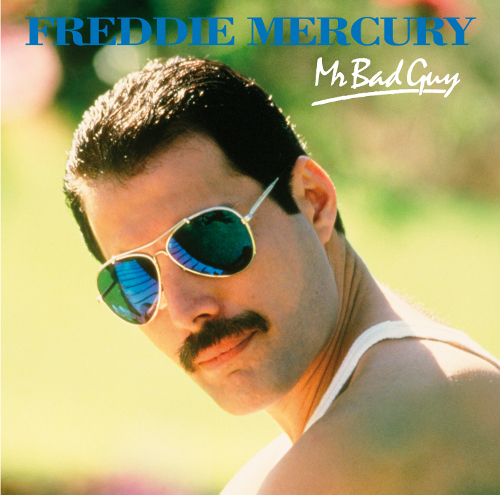
In early 1983, hot on the heels of exhaustive Queen tours of Europe, Canada, North America and Japan, Freddie and German record producer Reinhold Mack returned to Musicland studios in Munich to commence recording sessions for Freddie’s first solo album. Mack had already forged a working relationship with the band, having co-produced Flash Gordon, The Game and Hot Space.
What emerged in April 1985, was a rich fusion of material spanning the entire spectrum of human emotion; from the upbeat optimism of I Was Born To Love You and Let’s Turn It On, to the subdued poignancy of Love Me Like There’s No Tomorrow and There Must Be More To Life Than This.
For the most part, Mr Bad Guy finds Freddie in typically jovial mood, enjoying a particularly creative period, and in fine voice. The music is vibrant and the lyrics as candid as ever, taking on issues never very far from Freddie’s consciousness, evident on songs like Living On My Own, Your Kind Of Lover, Foolin’ Around, My Love Is Dangerous and the album’s semi-autobiographical title track.
Freddie: “I’ve put my heart and soul into this album. It has some very moving ballads - things to do with sadness and pain, but at the same time they’re frivolous and tongue-in-cheek, because that’s my nature. I’ve wanted to do a solo album for a long time and the rest of the band have encouraged me to do it. I wanted to cover such things as reggae rhythms and I’ve done a couple of things with a symphony orchestra. It has a very rich sound and it’s very beat orientated. I think it’s a very natural album, and I hope people will like my voice."
“I’m possessed by love. I’m a romantic. I’m also a man of extremes. I think the songs on this album reflect the state of my life; a diverse selection of moods. I wanted to write a batch of songs that came out under the name of Freddie Mercury. It’s not like starting a new career, it’s more like going off at a tangent. I feel I’m doing this with all the experience I’ve gained with Queen. But this is just me. I’m in control."
“It’s like painting a picture; you have to step away from it to see what it’s like. I’m stepping away from Queen and I think it’s going to give everybody a shot in the arm. But of course I’ll be working with Queen again, there’s no doubt about that."
“Yes, I would like it to be successful. It matters to me a lot. I’ve made a piece of music which I want to be accepted in the biggest way possible. But I’m not worried about the fact that it might not be successful, because if it isn’t, I will just go out and make another one.”
Originally titled Made In Heaven, Freddie changed his mind just weeks prior to the album going to press, preferring instead the aptness, as he perceived it, of Mr Bad Guy. However, Made In Heaven was destined to provide Roger, Brian and John with a fitting title to the final Queen album - albeit a decade later, in November 1995. For that project, the three remaining band members would painstakingly piece together the vocals left behind by Freddie – recorded in Montreux during his last months - to make a seamless final album. They would also respectfully revisit two of Freddie’s songs from Mr Bad Guy - I Was Born To Love You and Made In Heaven. As you might expect, Queen’s ‘re-visited’ versions are very different to the originals.
Freddie: “Basically, I was lost for a title, but as far as I’m concerned album titles are immaterial. I didn’t know what to call it, but I had what I thought was a very beautiful track called Made In Heaven, which seemed to conjure up an image of some kind. But to be honest, I’m not really worried about it. It’s what you listen to that matters, not what the title is. Don’t judge a book by its cover! - although, there is a beautiful photograph of me on this cover.”
Intriguingly, two tracks from this album began life during sessions for Queen albums, but were ultimately left off and later reworked by Freddie on his own. There Must Be More To Life Than This dates back to 1981 Hot Space sessions, while Man Made Paradise - a significantly different version to this – first emerged in 1983, during the making of The Works. More To Life was scheduled to close the album until Brian and Freddie wrote Is This The World We Created.
Due to commitments with Queen, Freddie never had the opportunity to tour with Mr Bad Guy. Within two weeks of the album’s release, the band had embarked upon tours of New Zealand, Australia and Japan. 1985, of course, concluded with the band’s unforgettable performance at Live Aid, on July 13, and arguably Freddie Mercury’s finest ‘hour’ on stage - one for which he will be fondly remembered.
Mack: “The songs on Mr Bad Guy came very quickly, but of course this time it was all so different because there was no band. Freddie was very happy with the album. I think one of the things he wanted to do most, was the big orchestral thing, which he never really got to do with Queen. Freddie was actually very modest about his songs, but he knew when he’d written a good one. That’s what I call genius; he would sit down, write something, and it was so good, he didn’t even question it or analyse it. Often he would say, ‘What do you think of the lyrics?’, and I would reply, ‘Very good!’, and he would say, ‘Wait a minute’, and change a chord here and there, then a big smile would come over his face as he told me, ‘Now it’s better, isn’t it!’
Mr Bad Guy spawned four singles, I Was Born To Love You, Made In Heaven, Living On My Own and Love Me Like There’s No Tomorrow, the third of which, was later to provide Freddie with his first and only solo No. 1. Sadly, though, it was to be a posthumous accolade, for the July 1993 No More Brothers’ Living On My Own Radio Mix, came 20 months after Freddie’s passing. It sold over two million copies and earned its creator an Ivor Novello award. He would have been justly proud.
Freddie dedicated the Mr Bad Guy album thus: “to my cat Jerry – also Tom, Oscar and Tiffany and all the cat lovers across the universe - screw everybody else!”
Barcelona - Original (1988)
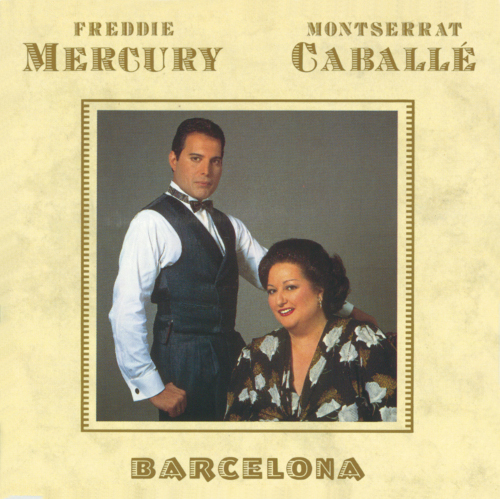
Without question, Barcelona was one of Freddie’s most ambitious, challenging and at once, courageous undertakings. He regarded it as one of the most rewarding projects of his career, and among those of which he was most proud. Indeed, working with Montserrat Caballé was the realisation of a dream he never really expected to come to fruition.
In July 1986, during an interview for the Spanish Arts TV programme Informe Semanal, Freddie discussed his passion for opera, and in particular his love of Montserrat Caballé’s voice. The main reason for his visit to Barcelona, he explained, was because he wanted to meet the diva. Oblivious of his interviewee’s penchant for opera, the host was suitably taken aback. The message, however, did not go unheard, and word got back to Montserrat. Manager Jim Beach made contact with Queen’s promoter in Spain, Pino Sagliocco, to set up a meeting, and ultimately Freddie’s dream became a reality nine months later. He finally met up with Montserrat at the Ritz Hotel in Barcelona on March 24, 1987. And so was born perhaps the most extraordinary collaboration in modern recording history.
Freddie flew into Barcelona with Jim Beach, composer/arranger Mike Moran, and his personal assistant Peter Freestone. Freddie also took with him a tape containing a song he had written specially for the occasion.
Peter Freestone: “They sat down. Freddie and Montserrat were sitting together and the rest of us stood around, and for about two or three minutes there was a silence. And then Freddie turned to Montserrat and said, ‘Well, I’ve got a song for you. Shall I play it?’ And that was it, that broke the ice.”
Mike Moran: "The track was Exercises In Free Love (the B-side of The Great Pretender). She was amazed."
‘Wonderful!’, Montserrat enthused. ‘I shall give it a world premiere in three days time at Covent Garden’. There was a moment’s silence before she tapped me on the shoulder and announced, ‘And YOU shall play!”
Montserrat Caballé: “I walked into the room. Freddie’s hands were so cold, and I was very cold too. So I thought, he is nervous too, that is good, because when people are nervous that means they are expecting something from the other one. So, later we stand up from the table and went to the corner of the room to the piano, and he was playing, and I was beginning to see his ideas. We could have gone on for hours and hours and hours. When we finished, we look at each other, and I knew it; that he has conquered me!”
One of the greatest divas of our time, and one the greatest rock music frontmen, spent the remainder of that afternoon singing together, with Mike Moran at the piano, in the hotel’s garden room.
On March 29, Montserrat was in London for her sold out performance in Covent Garden. Freddie was in attendance of course, and was, by all accounts, a quivering wreck. True to her word, as the final encore of the recital, Montserrat surprised her audience by announcing a brand new piece entitled Exercises In Free Love, written for her by Freddie Mercury and Mike Moran. The flawless performance evoked a standing ovation from the audience, and once again Freddie was ecstatic.
After the recital, Freddie, Mike, Montserrat and brother Carlos, dined together at Freddie’s house. Over dinner, Montserrat asked Freddie if he would write a song about her home town, and of course he agreed. Discussions continued late into the night - despite Carlos announcing early on that his sister and he would not be staying long - and the two finally left Freddie’s house at 5.00 a.m. the next morning. During the night, Freddie, Montserrat and Mike worked on ideas together which would later form the basis of Barcelona and The Fallen Priest.
Mike Moran: “We played everything from Aretha Franklin to Jennifer Holliday, and Montserrat had a go at gospel music like a diva had never done before. She felt a wonderful sense of artistic freedom, which Freddie had brought into her life. She said that it was wonderful being with people for whom music was a very natural expression, rather than a ritualised process”.
David Richards: “With his dream finally looking like it was coming true, Freddie set to work preparing the music at a frantic pace. Everything had to be absolutely perfect for the day when Montserrat would come into the studio and sing her parts. Freddie had told us of a story where she had once stopped singing in the middle of a concert, announcing, ‘I am very sorry, but I cannot continue. This orchestra is out of tune and therefore not adequate. Goodbye’. This made us very keen to get the best sounds we could. Freddie insisted on trying out every vocal line and phrase, not only his own parts, but those of Montserrat too, imitating her parts in a very high falsetto voice.
“I have never heard, before or since, a singer with such a vocal range as Freddie. He had to be in control of every note of the orchestral parts. Standing over Mike at his keyboard with a feverish enthusiasm, he would examine and direct every violin part, every cello note, when they should play, and how loudly, and when there should be flutes and how high they should play.
“We would then start to slowly and meticulously track on the orchestral parts one instrument at a time. At this stage I remember working very hard to make the sampled and synthesized instruments sound as real as possible. This was frustrating sometimes, as I thought a real orchestra would sound better. Fred maintained that he couldn’t have the same control over the orchestration that way, and we could always add real players after the parts had been finalized - which we did in the end, on one or two tracks.
“And so, for weeks the three of us sat in the studio doing this meticulous work until the day when finally it was perfect enough for Montserrat to come in and sing her parts. But this wasn’t enough perfection. The studio itself had to be polished, cleaned and made ready, and Freddie made Townhouse Studios redecorate the ladies toilets just in case she wanted to use them.
“We were nervous that day, but everything was ready and went very smoothly. Montserrat sang the songs brilliantly and turned out to be the nicest and friendliest of people. It was obvious that she liked and admired Freddie very much. The whole vocal session was completed in a couple of hours.”
Barcelona (the song) was recorded in April 1987 and was first performed by Freddie and Montserrat at the Ku Club in Ibiza on May 30, 1987. It was the finale to the worldwide Ibiza 92 festival. The hugely emotional reception it received from the Spanish audience, spurred Freddie and Montserrat to push on with the project, and Barcelona became a fitting title track to the album which was to follow, and a worldwide hit.
The Barcelona album was recorded over an 18 month period between January 1987 and July 1988, at both Townhouse studios in London and Mountain studios in Switzerland, and was produced by Freddie, Mike Moran and David Richards.
Freddie: “It’s so ridiculous when you think about it; her and me together. But if we have something musically together, it doesn’t matter what we look like or where we come from. I just thought, and still think, that Montserrat is remarkable and has a marvelous voice. I was willing just to go on liking it, never thinking she’d ask me to sing with her. It just snowballed. At first I thought it was only going to be the one track, but then she said, ‘Let’s make an album’. I thought, ‘My God, what am I going to do now?’ You just don’t turn the Super-Diva down. I thought I’d better put my money where my mouth is. It was such a different thing to do. I’m glad I did it. It was totally un-rock ’n’ roll, and something that really required a lot of discipline.
“I don’t know how Queen fans will react to this. I’ll soon find out. It’s a very hard album to categorise. You can’t put it under any label, can you? The worst thing they can call it is ‘rock opera’ – which is so boring.”
In terms of songwriting, 1987/88 was something of a prolific period for Freddie. A number of ideas he began during the Barcelona sessions were never finished, and those which were, underwent significant changes along the road to perfection. Working titles such as Rachmaninov’s Revenge, Vocal Exercises and Freddie’s Overture gave way to The Fallen Priest, Exercises In Free Love and Guide Me Home, and another idea, the exotically titled Africa By Night, evolved into All God’s People, and although far progressed, was shelved only to be re-worked later by Queen for the 1991 Innuendo album. Ultimately, in October 1988, the Barcelona album emerged as an immensely impressive body of work.
On October 8, 1987, Freddie and Montserrat appeared together again, this time at the huge La Nit event, on the steps of Montjuic Castle in Barcelona, to mark the arrival of the Olympic flag from Korea. In the presence of the King and Queen of Spain, Freddie and Montserrat performed three tracks, Barcelona, The Golden Boy and How Can I Go On, from their forthcoming album. The event was filmed for television worldwide, director Gavin Taylor working live with no less than 18 cameras.
On October 10, 1988, the Barcelona album was released to widely contrasting press reviews. For once, the music establishment was taken by surprise by the unlikely collaboration, and many struggled for things to say. But by far the majority were complimentary.
In Spain, the album was released three weeks earlier, on September 21, and promptly sold 10,000 copies in the first three hours of going on sale. It was the first collaboration between a rock star and opera diva, but a formula which was to be copied many times in subsequent years.
In America, the Barcelona album was released some four years after the original European LP, in July 1992. For that album, Hollywood Records repackaged the disc, using alternative artwork from the 1992 European CD re-issue, and, most significantly, remastered each track, thus creating something of a rarity. The famous title track single, meanwhile, was never released in America.
Freddie and Montserrat’s rock operatic detour reached No. 15 in the UK album charts, while the single peaked at No. 8, captured beautifully by David Mallet’s promotional video. The photograph of Freddie being embraced by Montserrat (on the reverse side of the album sleeve), is an image which will endure forever.
Mike Moran: “Freddie and Montserrat formed a very special bond. Freddie and I were invited to attend a tribute evening to Montserrat at the Madrid Opera House, and I was asked to play Ensueño for her. It was like an operatic This Is Your Life, and all unrehearsed. Huge luminaries were due to attend – di Stefano, Carreras, Juan Pons. I was announced, and duly went on stage with Montserrat, and she sang Ensueño.
‘Is Freddie here?’, she hissed at me in a stage whisper, as we took our bow. ‘Yes’, I replied, and pointed him out. At the end of the show, she insisted he be on stage with her. It was a tremendous vindication for him. Like Montserrat, Freddie was deeply respectful of talented people, those whom he admired, in whatever field. He was always ready to accord credit where he felt credit was due, and when it was done in reverse, when he was the recipient, he was delighted.”
Montserrat Caballé: “Barcelona was an example of the high musical talent of Freddie. He was not only a popular singer, he was a musician, that could sit at the piano and compose. He discovered a new way to bring different music styles together. He is the first and only person to have done this”.
Peter Freestone: “He was on cloud nine. Freddie was up in the sky. He didn’t need a plane to go home on, he was so happy. From what I know of Freddie, one of the biggest, greatest moments in his life, was when Montserrat had come over to London and put down her vocal track for Barcelona. After they’d done it, on the way home from the studio, I remember Freddie turning to me and saying, ‘That’s it! I’ve done it! I’ve got HER voice on MY music!”
In 1992 Barcelona was adopted as the main anthem for the Olympic Games. The single was re-issued in August, and this time peaked at No. 2. Freddie and Montserrat were to have sung it together at the opening ceremony of the games, but of course, ultimately Montserrat sang it instead with Jose Carreras.
Barcelona is a truly unique collection. It is a greatly underrated piece of work, too often overlooked in preference to the more pop-orientated, in-vogue records Freddie made. In terms of sheer musicality and vocal virtuosity, it is unsurpassed. It remains a firm favourite among fans and is generally regarded as THE Freddie Mercury showcase – a vocal, musical and lyrical tour de force.
In addition to the title track, two other songs were issued as singles - The Golden Boy and How Can I Go On, the latter with John Deacon on bass.
The Freddie Mercury Album (1992)
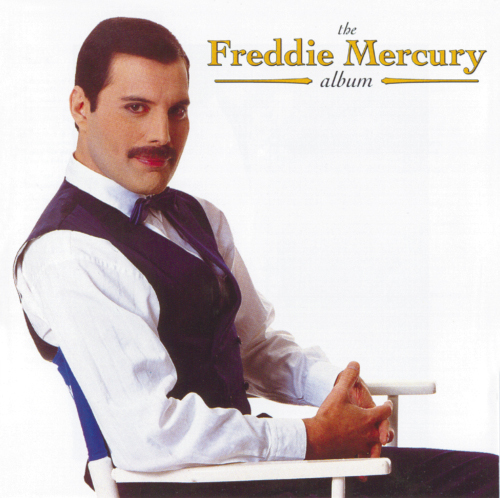
The Freddie Mercury Album was released through EMI on November 17th 1992, with Hollywood Records releasing this album a week later, the first anniversary of Freddie’s death, under the title The Great Pretender.
Conceived as a tribute, and featuring a mixture of Freddie’s best known solo hits and album material, the album (in both its forms) went on to be his biggest selling solo project by far. It topped the album charts in numerous territories, and has to date sold in excess of three million copies.
The album features eleven tracks, comprised for the most part of specially commissioned remixes. However, while many fans harboured strong reservations about the remixes, phenomenal sales figures in every corner of the globe, brought Freddie’s music to a whole new audience.
The US version features My Love Is Dangerous (Jeff Lord-Alge remix) in place of Barcelona (Album Version, as contained on the EMI disc), Brian Malouf’s remix of The Great Pretender, instead of the original cut (as contained on the European counterpart), and Richard Wolf’s remix of Love Kills, in place of the original version contained on the EMI disc. The remaining eight tracks were identical for both discs - Steve Brown’s remixes of Foolin’ Around and Your Kind Of Lover, In My Defence (Ron Nevison remix), Time (Nile Rodgers remix), Mr Bad Guy (Brian Malouf remix), a new mix of Living On My Own (featuring additional production by Julian Raymond), Let’s Turn It On (Jeff Lord-Alge remix) and the original version of Exercises In Free Love.
Some North American pressings of The Great Pretender, featured a 3.25 Techno Mix of Living On My Own, as an extra track.
Freddie Mercury Solo - Box Set (2000)
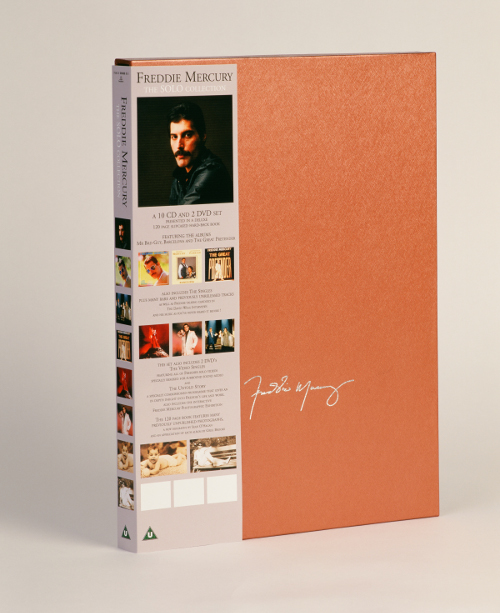
When Freddie Mercury died in November 1991, he left behind a body of recorded work spanning 20 years. The bulk of his archive naturally relates to the 15 studio LPs and 700 live concerts recorded with Queen, but Freddie also recorded two solo albums, several non-album singles, and guest appearances on numerous projects by friends. Add to this the material he produced, co-produced and co-wrote for other artists, and the legacy becomes far larger and more diverse than one might expect.
Though Freddie recorded the acclaimed "Barcelona" album with opera diva Montserrat Caballe in 1988, the "Mr Bad Guy" LP from three years earlier remains his only true solo album. However, this relatively small output belied a significant volume of out-takes and rarities, which until the turn of the millennium remained unheard. On 23rd October 2000 the long awaited, "Freddie Mercury Solo" box set was released. Conceived as the definitive collection, the 128-track, 12-disc collection (10 CDs, 2 DVDs) emerged after eighteen months painstaking work, as just that.
I spent 10 months working on the project, part of a small and dedicated team. My initial brief was to catalogue the hundreds of Queen tapes in the band's archive, but when the Freddie box set was proposed, I focused exclusively on Freddie's solo material until I had heard and catalogued every tape - and I do mean every tape.
Every reel was scrutinised from beginning to end because one never knows for absolute certain what might be lurking on the end of the spool. Not every recording is necessarily detailed on the box in all cases.
Some of the tracks in the collection (particularly on the three "Rarities" discs) are just brief extracts from sessions, sometimes less than a minute long. Very often I would listen through an hour's worth of tape only to end up with a 45-second snippet of amusing dialogue for potential use. Even in those instances, it was always worth the effort.
On "Rarities 2", there is a lovely extract where Freddie and Mike Moran are jamming together. One moment Freddie is ad-libbing like a man possessed, and the next he slips into a beautiful and very soulful Aretha Franklyn-esque piece. It was the perfect ending to the disc.
Recording engineer Justin Shirley-Smith comments: "It was strange hearing the 'late night jam'. I was there at the original session, and I never thought I'd ever hear it again. It was material like this that was the biggest challenge. I think Freddie would have approved it for release. We didn't want any tracks to be featured which Freddie might not have approved of. On the other hand, this being a fan-driven project, we wanted to include as much material as possible. Consequently, there has been a certain amount of studio trickery to enable us to present some material which might otherwise have been left off."
Listening through every tape was an exhaustive process. We needed to be sure that we wouldn't find something relevant to this collection years down the line when it was too late. This is Freddie Mercury's musical legacy we're talking about here, so we gave it all the time it deserved. Justin Shirley-Smith and I were extremely careful not to miss anything.
Another significant aspect is the top-quality packaging. Queen art director Richard Gray did a superb job on the 120-page-book. The illustrations of rare Freddie solo releases from around the world come from Brian May's own collection, and there are some great and very rare photographs which fans (at the time, year 2000) would not have have seen before.
Also included are some of Freddie's original college sketches and paintings, plus a huge appraisal of Freddie by music journalist Sean O'Hagan. All these elements offer a personal feel to the package. While the project was orientated to Freddie's solo career, there are of course numerous references to Queen throughout. Brian wrote a lovely introduction for the book, detailing ground not covered before and I like to think that Freddie would have appreciated it - as well as the work we put into every other aspect of the project too. We tried to compile something weighty and impressive that the fans would love, obviously, but which Freddie would have approved of. The latter was paramount and a difficult thing to balance. There were those that thought we offered a little too much of Freddie at work, but I recall thinking it would be great to offer, for the very first and probably only time, some insight into the great man and wonderful musician at work; and therefore some of the frustrating out-takes too. I thought that element was important, and so too did the fans I spoke with much later when they heard it. We hear Freddie getting things wrong sometimes - he was human after all!!! - and ultimately triumphing and making it through to the amazing familiar songs we all love.
In addition to the nine music discs and the interview audio CD, the box included two DVDs. The first is a collection of Freddie's solo videos, carefully remixed in Surround Sound; it also features interviews with the directors who worked on Freddie's solo clips. The other is a fascinating two-hour documentary about his life: Freddie Mercury: The Untold Story.
Greg Brooks.
Revised text: May 2016
Barcelona - Special Edition (2012)
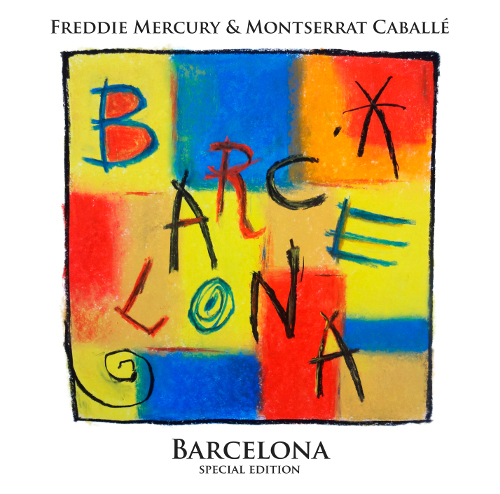
For many years fans of the Barcelona album have always wanted to hear what it would have sounded like with a live orchestra. Believe it or not, it was almost entirely recorded on keyboards. The reason Freddie decided upon that at the time was largely due to the fact that he was already dealing with an opera singer who came from an entirely different world to his and to arrange a score for a full eighty piece orchestra was one step too far out of his comfort zone.
In 2012, to mark the 25th anniversary of the song, Stuart Morley, musical director of the Queen musical ‘We Will Rock You’ faithfully adapted the entire album for orchestra, lifting what was already an outstanding record into a whole new stratosphere. Rousing, triumphant, emotional and magnificent.
In addition to the orchestral score, performed by the City Of Prague Philharmonic, other live instruments were added for the first time. Naoko Kikuchi, is one of the few koto players in the western world, flew over to add the ancient oriental instrument to ‘La Japonaise.’ Rufus Taylor, Roger’s son, replaced the drum machines on ‘The Golden Boy’ and ‘How Can Go On’ with live percussion. The latter song also boasts a new violin solo from David Garret and of course, John Deacon appears on bass.
Barcelona: The Special Edition’ finally became the album it should have been giving the the world an opportunity to rediscover and fall in love with it all over again. The only downside is that the visionary behind this masterpiece isn’t around to hear it too.
The Great Pretender: Documentary (2012)

In 2011, following the success of ‘Queen: Days of Our Lives’ I was approached by Jim Beach to think about making a documentary about the 'Barcelona’ album, which was approaching it’s 25th anniversary. Originally, this was all the documentary was going to be, however, I felt there was a bigger story to tell; the story of Freddie’s life outside of Queen as an individual and a solo artist, the ups and downs, professionally and personally. I was keen to let Freddie tell his own story using the unseen, very funny and honest David Wigg interview as a narrative spine. Although much of the story was well known to fans, I looked everywhere for unseen interviews, transferred promo rushes, concert footage and uncovered so much material that I would say that 90 percent of what you see in 'The Great Pretender' had never been seen before.
It was a real labour of love for me and my proudest achievement. A dream come true to make it. Myself and the editor Christopher Bird could not wait to come too work each day to spend time with Freddie, which was what it felt like. We also pissed off a lot of people in the other edit suites playing the songs way too loud. It was well rewarded with an Emmy and a Rose d’Or for 'Best Arts Documentary' and I was also nominated for a BAFTA for Breakthrough Talent as a director (some other bloke won - I have since had him shot). The reviews and viewing figures were outstanding - however, none of that really means anything. For me, what matters is that I think I made a documentary that Freddie fans like me enjoyed and something I hope that Freddie would have been proud of.
Rhys Thomas
(Director)
The Great Pretender: A life in pictures book (2012)
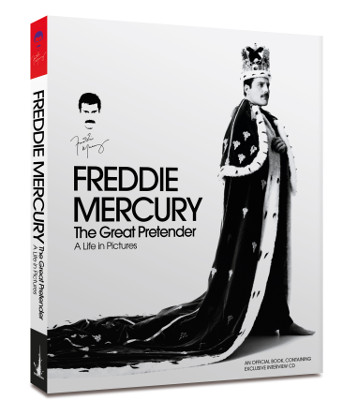
Published in hardback by Carlton on 3rd September 2012 - The Great Pretender: A Life In Pictures was an illustrated portrait of Freddie’s life. It was published to coincide with Freddie For A Day, annual awareness and fundraising event in aid of the Mercury Phoenix Trust.
This official book celebrates his colourful life: as a child growing up in Zanzibar; as a singer in Queen; as a solo artist; and above all captures him as one of the twentieth century’s foremost popular cultural icons.
Freddie’s life is recounted in insightful text and captivating photographs from the most recognised to the very rare.
Also included was an hour-long CD that contains a rare, revealing interview with Westwood One “Off The Record” radio host Mary Turner recorded in the 1980’s in which he candidly discusses all aspects of his life and stardom.
The book was created and designed by long time Queen photographer and graphic designer Richard Gray. As well as designing album and singles covers, Gray also photographed Queen on stage at the end of their last concert with Freddie and shot the last portrait taken of Freddie, both included in this book.
The accompanying text was written by British Press Awards and J Dudley Johnston award winner Sean O’Hagan.
MESSENGER OF THE GODS: THE SINGLES (2016)
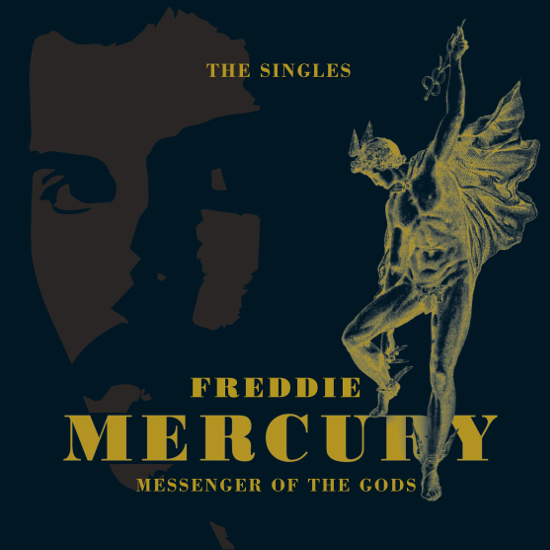
Freddie Mercury was a man of many talents and many different sides. The songs he wrote for and with Queen filled stadiums around the globe and have rightly gone down in history, but he also embarked on a solo career that took him from the clubs of Munich and New York to the great opera houses of the world.
He was the ultimate showman, but he kept his private life away from the prying eyes of the media; a larger than life rock star who loved disco, classical music and ballet. He was a restless spirit, a true chameleon who reveled in his own contradictions.
All the different sides of this iconic musician can be found on Freddie Mercury: Messenger Of The Gods – The Singles. Fittingly released on Mercury Records for the world outside North America, and on Hollywood Records in North America, this box set brings together all 13 of Freddie’s solo singles on individually coloured vinyl.
From his debut solo single I Can Hear Music, released under the name Larry Lurex, through the dance floor-influenced solo anthems of the 80s and up to his collaborations with legendary Spanish opera singer Montserrat Caballé including the timeless Barcelona, this is a journey through the career of a unique talent.
Messenger Of The Gods is also includes two posthumous singles, In My Defence and Living On My Own (No More Brothers Radio Mix), the latter of which became Freddie’s first solo number 1 and was the biggest selling European single of the year in 1993.
Had he lived, it is anyone’s guess where this most restless and protean of singer’s muses would have taken him. But Messenger Of The Gods – The Singles is a towering legacy, a collection of songs which will never lose their stature of classics and will live on forever.
Freddie Mercury: Messenger Of The Gods – The Singles was released by Mercury /Universal on September 2 2016 as a box set featuring 13 x 7” singles on coloured vinyl with a booklet featuring photos, some of which were previously unpublished, and text. It also included a download voucher. Freddie Mercury: Messenger Of The Gods – The Singles was also available on 2CD with a 20-page booklet and as a digital album.
NEVER BORING (2019)
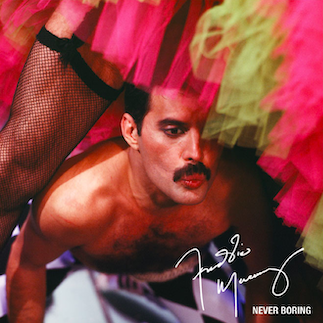
Released by Hollywood Records in North America and Mercury Records in the rest of the world on October 11 2019, the “Never Boring” box set brought together for the first time a specially-curated selection of Freddie Mercury’s music, visuals and written and spoken words. It is was a collection to jog the memory of fans, old and new, as to why Freddie remains such a beloved figure, nearly 30 years after his death.
Taken from the very best original source material available, the full “Never Boring” collection contained three CDs with 32 tracks; a Blu-ray and DVD featuring 13 promo videos and interview; a 120-page 10”x10” hardback book full photos, many of them rare and unpublished, as well as thoughts and choice quotes from Freddie himself, and an introduction from Rami Malek, who earned an Oscar for his portrayal of Freddie in Twentieth Century Fox Film Corporation’s “Bohemian Rhapsody”. Specially created insert packaging includes a double-sided poster containing an image of Freddie and an original work from synesthetic artist Jack Coulter inspired by the song “Mr Bad Guy”.
The three CDs included a new 12-track compilation of many of Freddie’s greatest solo performances; a newly mixed 11-track special edition of “Mr Bad Guy”; and the nine-track 2012 special edition of “Barcelona” featuring full orchestra. The Blu-ray and DVD of Freddie’s promos and his stage performances with Montserrat Caballé include eight that have been painstakingly reassembled from the original 35mm film rushes to give them the best-ever visual and sound quality. The albums were also individually available on CD, vinyl and on digital and streaming services.
The set included the recently discovered track “Time Waits For No One” produced by Dave Clark which has recently taken the internet by storm and a haunting little known track “Love Me Like There’s No Tomorrow” immortalised in a new animated video by award winning duo Beth David and Esteban Bravo.
For all the 2019 ‘special edition’ tracks on “Never Boring” and the “Mr Bad Guy” album, sound team Justin Shirley-Smith, Joshua J Macrae and Kris Fredriksson have taken the very best original source material available. They went back not to previously remastered and mixed tapes, but to the original source multi-track tapes, so that they could build a new mix true to Freddie’s original versions, now taking advantage of the time, resources and technology that Freddie may not have originally had available to him in the 1980s. All offer ultimate quality, first generation vocals showing off Freddie’s incredible vocal range.
The special edition of the “Barcelona” album had been reworked in 2012 using similar methods, but what was missed by many at the time was that the 2012 edition replaced the previous instrumental tracks with new, live symphonic orchestration and percussion, rather than synthesisers and drum machines used on the original album.
The same painstaking care in rebuilding the audio tracks has been used to bring all of Freddie’s original video promos to life again.
The entire “Never Boring” package reflects Freddie’s eclectic tastes and love for life. As he himself said: “Some people can take second best, but I can’t. I look upon it as defeat. If you’ve got the taste of being number one, then number two isn’t good enough.”
